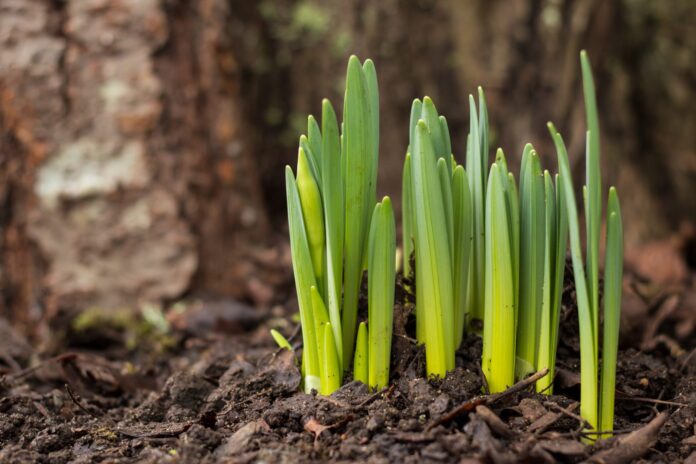AUBURN UNIVERSITY, Ala. – Winter bulbs serve as remedy to the winter blues until spring. However, what if the bulbs simply refuse to bloom? For those who planted winter bulbs and have yet to see results, Lucy Edwards, an Alabama Extension home grounds, gardens and home pests regional agent, has solutions and tips for next season in order to have bright, blooming winter bulbs.
Winter bulbs
According to Edwards, winter bulbs are bulb varieties that are brought indoors to force an early bloom. Of these manipulated bulbs, the most common include tulips, narcissus, hyacinth, crocus and amaryllis. Fooling Mother Nature by placing these bulbs inside can require some training and adjustment.
As a part of their maintenance, most winter bulbs require a cool period prior to their development of shoots and flowers.
“This chill time takes 10 to 14 weeks depending on the species,” Edwards said. “Make sure to read the packaging well because some bulbs are sold pre-chilled.”
What to expect now
To get the longest blooming period, plant winter bulbs in late October or early November. If bulbs were planted during the late fall, the bulbs should be ready to transition from their cooling period to warmer conditions. Near a window that receives morning sun is a perfect place for a warm transition.
“As buds begin to form, move the bulbs away from the direct sunlight to ensure the blooms last as long as possible,” she said.
However, if bulbs were planted during the fall and are not experiencing any growth at this point, it could be a problem with the bulb itself. It is often the case that the bulb may be an old, dry bulb. Another possibility is the bulb is too moist or too dry. Bulbs are typically planted in rocks, marbles or peat moss, so they can be easy to overwater and cause the bulbs to rot. Lastly, the bulbs may not be budding because they did not receive proper cooling.
What if outdoor bulbs aren’t blooming?
There are several reasons gardeners may not be seeing blooms on outdoor bulbs yet. The first factor is bulb quality. Various fungi and bacteria can infect bulbs causing the bulb and roots to rot, as well as mold. Examine the bulb for discoloring, odd texture or shaping before planting. Also, unhealthy bulbs are often dry, too soft or appear moldy. Healthy bulbs are firm and do not feel light or hallow. Simply squeeze the bulb to check its condition.
Improper soil pH can also interfere with the bulbs. Each bulb thrives best in a different soil type. Research bulbs and take care to plant in a correct location. Next, conduct a soil test to ensure the bulb will grow well with the acid levels in the soil. If all of these conditions have been checked and bulbs still aren’t blooming, it may be an issue of adequate drainage.
If bulbs are too deep in the ground or not in a location with full sun, this too may stunt the blooms. Plant the bulbs three to four times the height of the bulb itself. Planting depth, as well as exposure to full sunlight, ensures that the bulb will be able to sustain unusually cold winters. Take care to properly research the recommended depth to plant each specific bulb type in the garden or backyard.
What if I have yet to plant winter bulbs?
Those just beginning the planting process can expect blooms by Easter.
“To begin the process, plant the bulbs and place them in a cool room,” Edwards said. “A good, cool place can be a garage or non-heated porch.”
The ideal temperature range for the bulbs is about 35°F to 55°F. They should remain in the cool environment for 10 to 14 weeks. While it is important to leave the bulbs in the cool environment, leaving them for too long will cause short stems and poorly developed flowers. It is important to log the room temperatures and the amount of time the bulbs have been in the area.
More information
Don’t let failing winter bulbs leave a longing for spring. Grow radiant winter bulbs inside the home to drown out the dreary winter days. For more information on winter bulbs, visit the Alabama Extension website, www.aces.edu. Also, check out publications from the Virginia Cooperative Extension and University of Minnesota Extension.




















